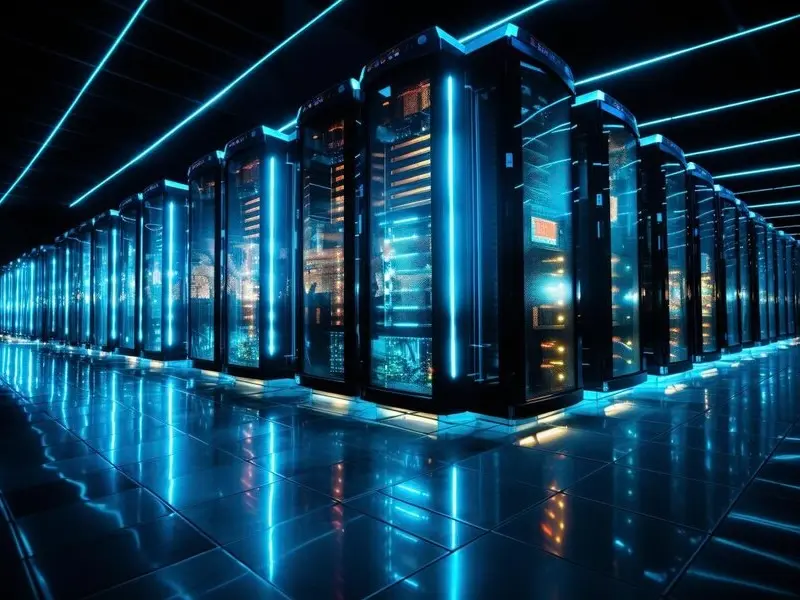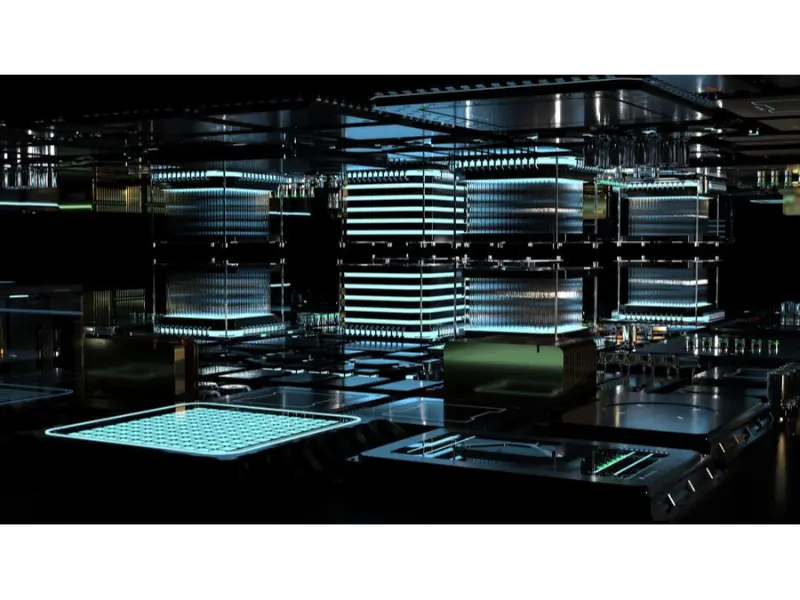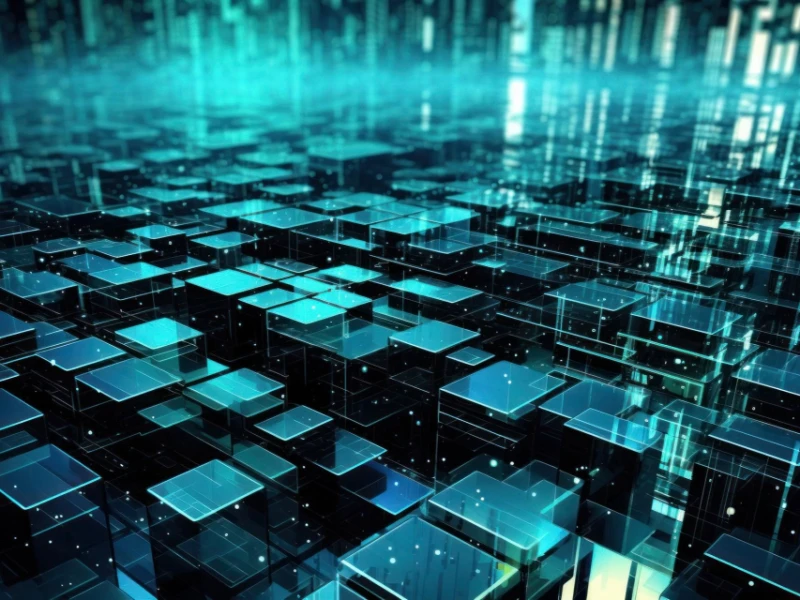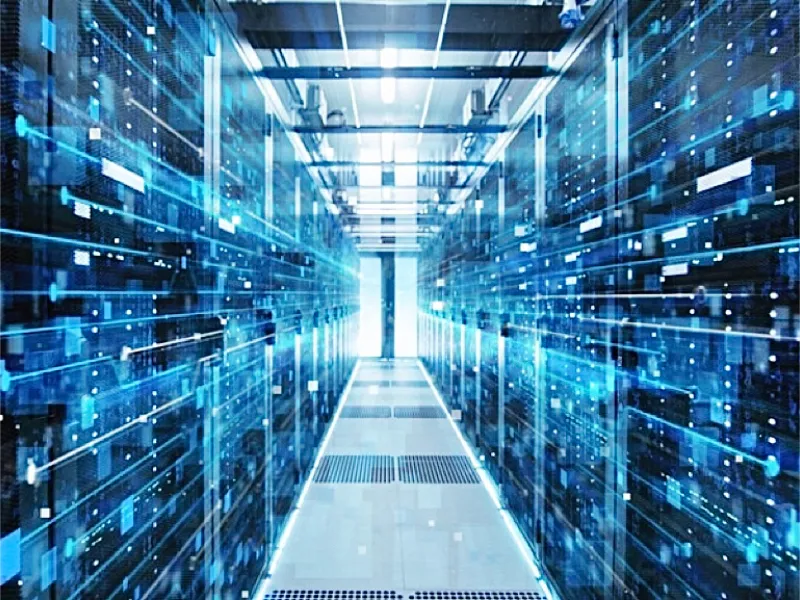- A data centre is a facility that houses critical IT infrastructure like servers, storage systems, and networking equipment to store, manage, and process data.
- Data centres include servers, storage, cooling systems, and security features, with various types such as enterprise, colocation, and cloud data centres.
Nowadays, data is generated and processed at an unprecedented rate. To manage this vast volume of data, businesses and organizations rely on data centres. But what exactly is a data centre, and why is it so critical to the modern digital ecosystem?
This article will delve into the concept of a data centre, its functions, types, and how it supports businesses in today’s data-driven world. Along the way, we’ll explore related terms like cloud computing, colocation, edge data centres, and data centre infrastructure to provide a complete understanding of this integral part of the digital landscape.
Also read: Data centres face cooling challenge as AI demand surges
Also read: Blackstone confirms $13.3B investment in AI data centre in Britain
What is a data centre?

A data centre is a physical or virtual facility that houses an organization’s critical IT infrastructure, including servers, storage systems, network components, and other components necessary to store, manage, and process data. The main function of a data centre is to ensure that data is securely stored, easily accessed, and available for use by authorized personnel. “Data centres are the unsung heroes of the digital world,” says Alex Karp, CEO of Palantir Technologies. “Without them, businesses wouldn’t be able to scale their operations or protect their most sensitive information.”
In addition, Data centres serve as the backbone of IT operations for many businesses, governments, and organizations. From hosting websites to enabling enterprise applications and data analytics, data centres support nearly every aspect of modern life. “As digital transformation accelerates, the demand for robust and reliable data centres is growing exponentially,” notes Lisa Su, CEO of AMD. “They are essential in supporting technologies like AI, cloud computing, and big data analytics.”
Furthermore, data centres enable businesses to leverage vast amounts of data, providing them with the infrastructure needed to manage, analyze, and store that data securely. With rising cybersecurity concerns, “data centres must be equipped with the latest security protocols and ensure compliance with global regulations,” adds Brian Chesky, CEO of Airbnb.
Data centres are the unsung heroes of the digital world. Without them, businesses wouldn’t be able to scale their operations or protect their most sensitive information.
Alex Karp, CEO of Palantir Technologies
Also read: Link Datacenter: Driving innovation in Middle Eastern and African IT solutions
Also read: Exowatt P3 brings sustainable and cheaper energy to data centres
Components of a data centre

A data centre typically includes several key components that work together to provide uninterrupted service. These components are critical to maintaining the performance, security, and reliability of the data centre. “The backbone of any data centre lies in its infrastructure — from servers and storage to networking equipment and cooling systems,” says John Chambers, former CEO of Cisco Systems. “Each element must be meticulously integrated to ensure that the data centre runs smoothly and securely at all times.”
These components include servers that store and process data, storage systems that ensure easy retrieval, networking equipment that facilitates data transmission, and cooling systems to maintain optimal temperatures. Additionally, security systems are vital to protect sensitive data from threats. “Data centres are the lifeblood of modern digital enterprises,” explains Thomas Kurian, CEO of Google Cloud. “Their components must be designed with redundancy, scalability, and resilience in mind to support the ever-growing demand for data processing.”
The backbone of any data centre lies in its infrastructure — from servers and storage to networking equipment and cooling systems. Each element must be meticulously integrated to ensure that the data centre runs smoothly and securely at all times.
John Chambers, former CEO of Cisco Systems
Servers
Servers are the heart of any data centre. They store and process data, running applications, websites, and software for businesses. Servers are often housed in racks and can be configured to handle specific tasks based on the needs of the organization.
Storage systems
Data centres require high-capacity storage solutions to hold the enormous amounts of data that businesses generate. Storage systems include hard drives, solid-state drives (SSDs), and cloud-based storage to ensure data can be quickly accessed and retrieved
Networking equipment
Networking equipment such as routers, switches, and firewalls are essential for data transmission within a data centre. These devices enable data to move between servers, storage systems, and end-users securely and efficientl
Power supply
A reliable power supply is crucial to a data centre’s operation. Many data centres are equipped with uninterruptible power supplies (UPS) and backup generators to ensure continuous operation, even in the event of a power outage.
Cooling systems
Servers and other IT equipment generate heat, so efficient cooling systems are vital. Data centres often employ air conditioning, liquid cooling, and even advanced cooling solutions like free-air cooling to regulate temperature and prevent overheating
Security systems
Security is paramount in a data centre to protect sensitive data and infrastructure from unauthorized access, cyber threats, and physical damage. Surveillance cameras, biometric access controls, and advanced encryption technologies help ensure that data is kept safe
Also read: Erick Hadi: Leading Nusantara’s drive to close Indonesia’s data centre talent gap
Also read: SingTel and Hitachi collaborate to build innovative data centres
Types of data centres

While all data centres share the same basic purpose of storing and processing data, they can differ in terms of scale, ownership, and the services they provide. There are several types of data centres, each designed to meet specific needs.
1. Enterprise data centres
Enterprise data centres are privately owned and operated by individual organizations to meet their own needs. These data centres are often custom-designed to align with the company’s specific requirements and house the organization’s internal IT systems.
Enterprise data centres are typically located on-premise or in close proximity to the organization’s headquarters, providing direct control over the hardware and software. However, they also come with higher costs related to maintenance, staffing, and energy consumption.
2. Colocation data centres
In a colocation data centre, companies rent space within a larger facility to house their servers and storage equipment. This is a popular option for businesses that require the security, power, and cooling infrastructure of a data centre without the need to manage the facility themselves.
Colocation data centres typically offer shared resources, such as bandwidth, security, and cooling, and are designed to reduce operational overheads while ensuring high performance and reliability.
3. Cloud data centres
Cloud data centres are owned and operated by cloud service providers like Amazon Web Services (AWS), Microsoft Azure, and Google Cloud. These data centres support cloud computing platforms, where users rent virtualized computing resources (like virtual machines, storage, and databases) instead of relying on physical infrastructure.
Cloud data centres are designed to be scalable, with elastic resources that can grow or shrink based on demand. They provide businesses with the flexibility to access computing resources on a pay-as-you-go basis, making cloud computing an attractive solution for organizations of all sizes.
4. Edge data centres
Edge data centres are smaller, distributed facilities placed closer to end-users to improve latency and reduce the load on centralized data centres. By processing data locally at the edge of the network, these data centres help enhance performance for applications that require real-time processing, such as IoT devices, autonomous vehicles, and video streaming services.
Edge computing reduces the distance data has to travel to reach the user, which results in faster processing times and lower latency.
Also read: Maroc DataCenter: Leading the way in innovative technology solutions
Also read: Velo Technologies, Infinaxis boost Cyberjaya data centre capacity
Data centre infrastructure: The foundation of digital operations

A well-designed data centre infrastructure is essential to the seamless operation of an organization’s IT systems. From power and cooling to network design and security, the infrastructure needs to be robust and resilient. “The success of any data centre hinges on its ability to provide uninterrupted power and reliable cooling systems,” says Ginni Rometty, former CEO of IBM. “Without these systems, even the most advanced infrastructure would fail to perform.”
Redundancy, power supply, and cooling systems ensure that the data centre remains operational 24/7, even in the event of technical failure or external disruptions. Networking and security components are also critical to ensuring the safe and efficient transfer of data. “As we move toward a more interconnected world, data centres must integrate state-of-the-art security measures to protect against cyber threats,” explains Andy Jassy, CEO of Amazon Web Services (AWS). “Cybersecurity isn’t just a feature; it’s a foundational principle for any modern data centre.”
The key components of a data centre infrastructure include:
Physical security
Ensuring physical security is one of the top priorities in data centre infrastructure. Access control systems, video surveillance, and security guards help safeguard critical equipment and sensitive data from unauthorized access.
Redundancy and reliability
Data centres implement redundancy in power, cooling, and network systems to minimize the risk of downtime. In many cases, backup power supplies, such as generators and battery systems, ensure that operations continue during power outages.
Scalability
The ability to scale infrastructure as demand grows is another critical aspect of data centre infrastructure. Data centres are designed to add new servers, storage, and networking equipment as needed without compromising performance.
Green data centres
With growing environmental concerns, many organizations are turning to green data centres that focus on energy efficiency and sustainability. These facilities implement energy-saving technologies, such as free-air cooling and renewable energy sources, to minimize their carbon footprint.
The success of any data centre hinges on its ability to provide uninterrupted power and reliable cooling systems. Without these systems, even the most advanced infrastructure would fail to perform.
Ginni Rometty, former CEO of IBM
Why are data centres important?

Data centres play a crucial role in keeping the digital world running smoothly. As businesses continue to rely on data for decision-making, customer engagement, and operations, having a reliable and efficient data centre is essential. Here’s why they are so important:
- Data Storage and Management
Data centres allow organizations to store massive amounts of data securely and access it when needed. They provide the infrastructure needed to manage data efficiently, supporting activities such as data analytics, business intelligence, and AI processing. - Business Continuity
Data centres provide businesses with the infrastructure needed to run mission-critical applications and services. Their ability to handle backup and disaster recovery ensures that companies can continue operations even in the event of equipment failure or cyber-attacks. - Support for Cloud and Hybrid Cloud Models
As more businesses adopt cloud computing, the demand for cloud data centres continues to rise. Cloud data centres enable organizations to scale their IT infrastructure quickly and cost-effectively, without the need to invest heavily in physical hardware. - Security and Compliance
Security is a top priority for data centres, which are equipped with advanced technologies to protect sensitive data. For industries like finance and healthcare, data centres help ensure compliance with regulatory requirements like GDPR, HIPAA, and PCI DSS.
Also read: Vantage Data Centres secures $9.2B equity investment
Future of data centres: Trends to watch

As technology evolves, so too does the landscape of data centres. Here are a few trends that are shaping the future of data centres:
- AI and Automation
Artificial intelligence (AI) and automation are expected to play a major role in managing data centre operations. From predictive maintenance to self-healing systems, AI will help improve efficiency, reduce costs, and enhance reliability. - 5G and Edge Computing
The roll-out of 5G networks will drive the demand for edge data centres, enabling low-latency applications and faster processing of real-time data. As IoT devices become more prevalent, the need for local data processing will grow, leading to more decentralized data centres. - Sustainability Initiatives
As environmental concerns continue to rise, data centres will increasingly focus on adopting green technologies. This includes using renewable energy sources, optimizing cooling systems, and minimizing energy consumption. - Hyper-converged Infrastructure
Hyper-converged infrastructure (HCI) is revolutionizing data centre design by integrating storage, computing, and networking into a single system. HCI allows organizations to scale their infrastructure more efficiently and reduce the complexity of managing separate components.
FAQ
A data centre is a physical or virtual facility that houses an organization’s IT infrastructure, including servers, storage systems, and networking equipment. It is used to store, manage, and process large amounts of data, ensuring it is securely stored and accessible when needed.
Data centres are critical for businesses as they provide the infrastructure necessary to store, manage, and secure business data. They support services like cloud computing, data analytics, and web hosting, enabling businesses to operate efficiently and ensure business continuity.
There are several types of data centres:
Enterprise Data Centres: Privately owned and operated by businesses for internal IT needs.
Colocation Data Centres: Facilities where companies rent space for their servers and IT equipment.
Cloud Data Centres: Managed by cloud providers like AWS or Google Cloud, offering virtualized resources.
Edge Data Centres: Smaller, decentralized facilities designed to process data closer to end-users for faster performance.
Data centres implement several layers of security, including physical security measures like biometric access controls and surveillance, as well as cyber protection such as encryption, firewalls, and intrusion detection systems. These safeguards protect sensitive data and prevent unauthorized access.
Data centres are increasingly adopting green technologies to reduce their environmental impact. This includes using renewable energy sources, optimizing cooling systems to reduce energy consumption, and employing more energy-efficient hardware. Many companies are striving for carbon-neutral operations to meet sustainability goals.

